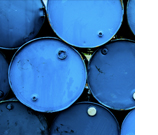Insights
 Oil and Gas Industry Outlook 2022
Oil and Gas Industry Outlook 2022
July 1, 2022
As agents dealing with oil and gas insurance, it’s essential to understand the impact of the global economy and other factors on the oil and gas industry. While this is a sector that typically sees demand increase, the events of 2021 and the first quarter of 2022 have seen a noticeable shift in industry growth. While no one can predict the future, industry experts are confident that heightened levels of uncertainty are on the horizon.
The Oil and Gas Industry in 2022
Despite the residual impact of COVID-19 during 2021, the oil and gas industry rebounded and had oil prices reaching the highest they’d been in six years. However, while many expected oil and gas companies to work harder to address climate change and exhibit more capital discipline, political unrest overseas and economic turmoil at home have shifted the trends in the industry. The global oil demand has dipped below 2019 levels, and many organizations are lowering the outlook for global demand for the rest of the year.
As geopolitical tensions continue to escalate, some experts estimate rising oil prices will create a million-barrel-a-day decrease in demand. JP Morgan is forecasting the cost of the barrel to remain around $114, even though there is an expectation that Europe will move toward shutting off oil purchases from Russia. Should Russia find a way to re-reroute oil, it’s possible that China may increase its purchasing power to help balance the global market. It is still a fluid situation, and there is a likelihood that oil prices could surge up to $35 higher a barrel than the current price target.
Oil and Gas Industry Projections for the Year
While some uncertainty is predicted for the industry over the coming months, insight from the U.S. Energy Information Administration has released a few more positive short-term predictions. However, since the factors driving energy supply could change (such as an increase in U.S. drilling, OPEC+ production decisions, and sanctions placed on Russia), these too could vary. The current inventory levels for oil are low, which will contribute to volatility in oil pricing. By the start of 2023, pricing is expected to drop to $97 a barrel.
Production around the globe will also experience changes. Russian production is expected to decline to 9.3 million barrels per day by 2023, but global bans on imports from Russia can seriously disrupt these numbers and pricing. OPEC+ has announced production increases, and while inventory margins remain low, gasoline prices are expected to remain at record highs. Natural gas is also climbing, with inventories also hitting well below average.
Oil and gas insurance can help address some of the industry's risks, but understanding the trends and outlook can be effective at riding out the changes. Keeping an eye on these factors can protect a business in a volatile sector. ◼
